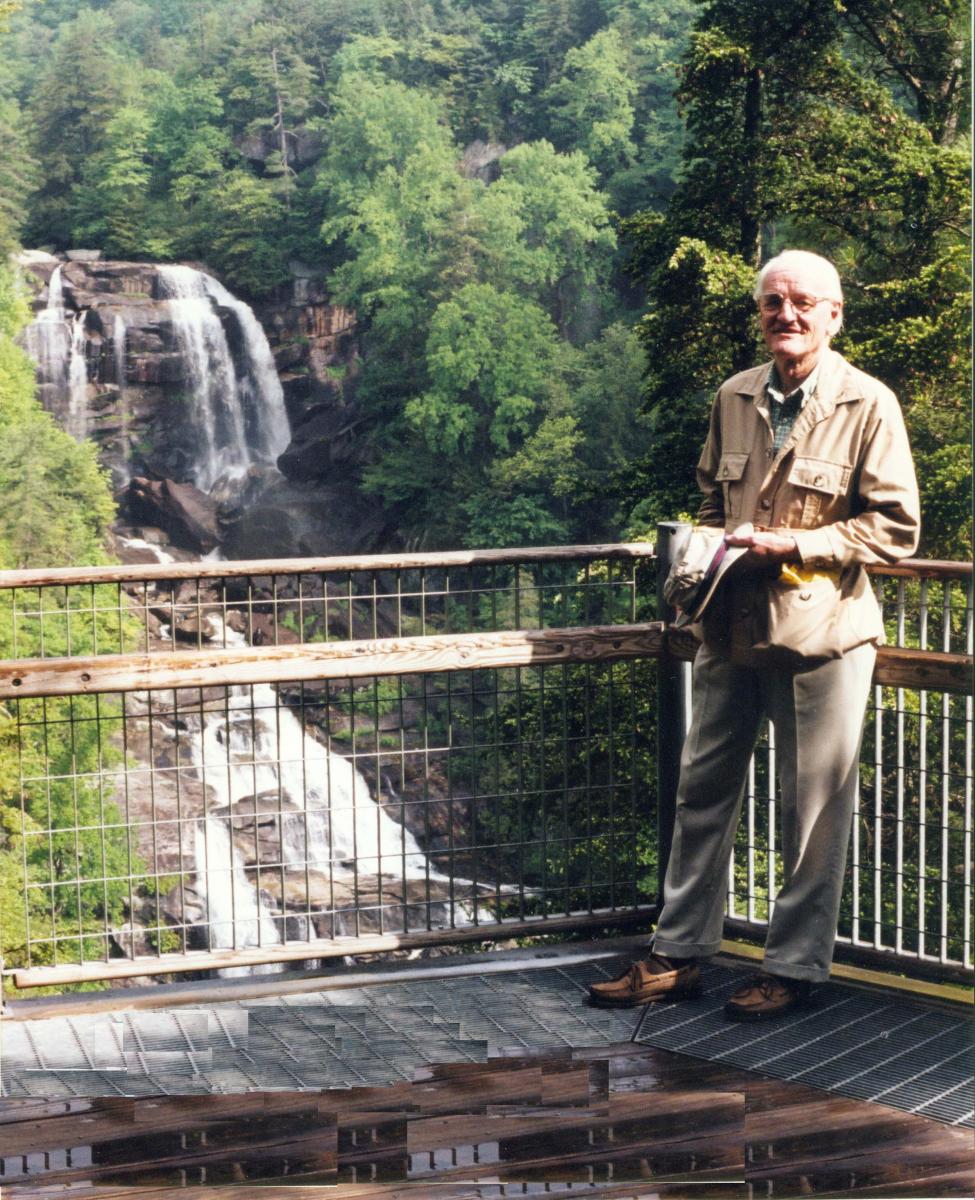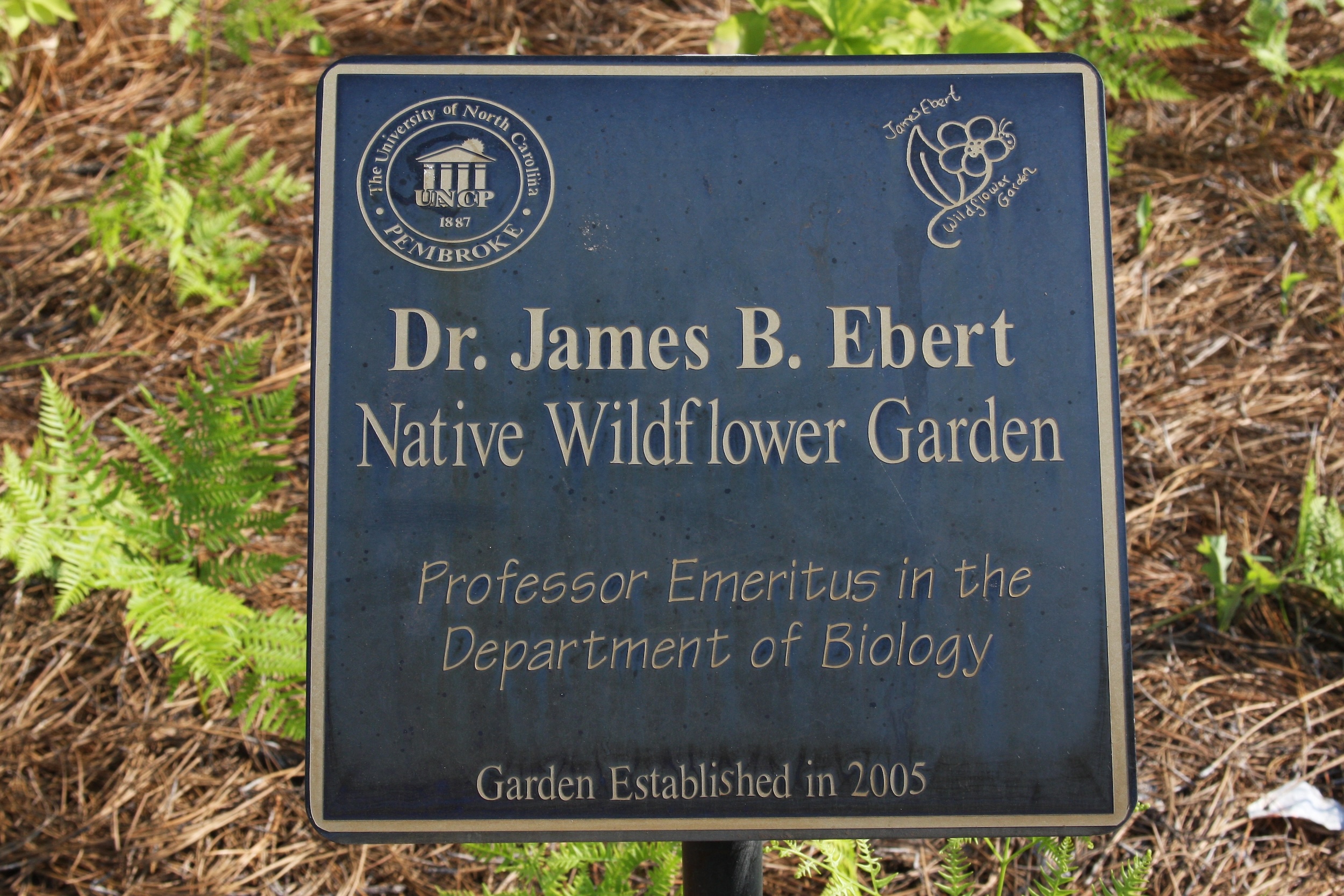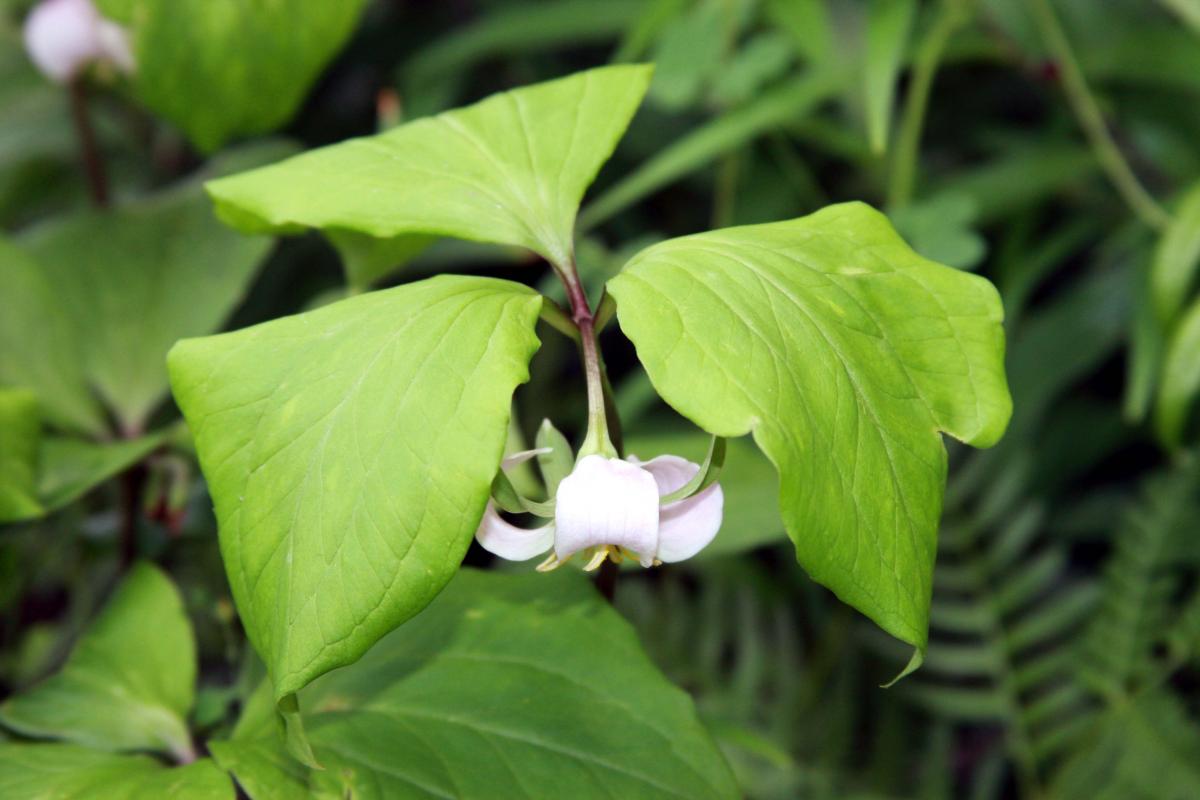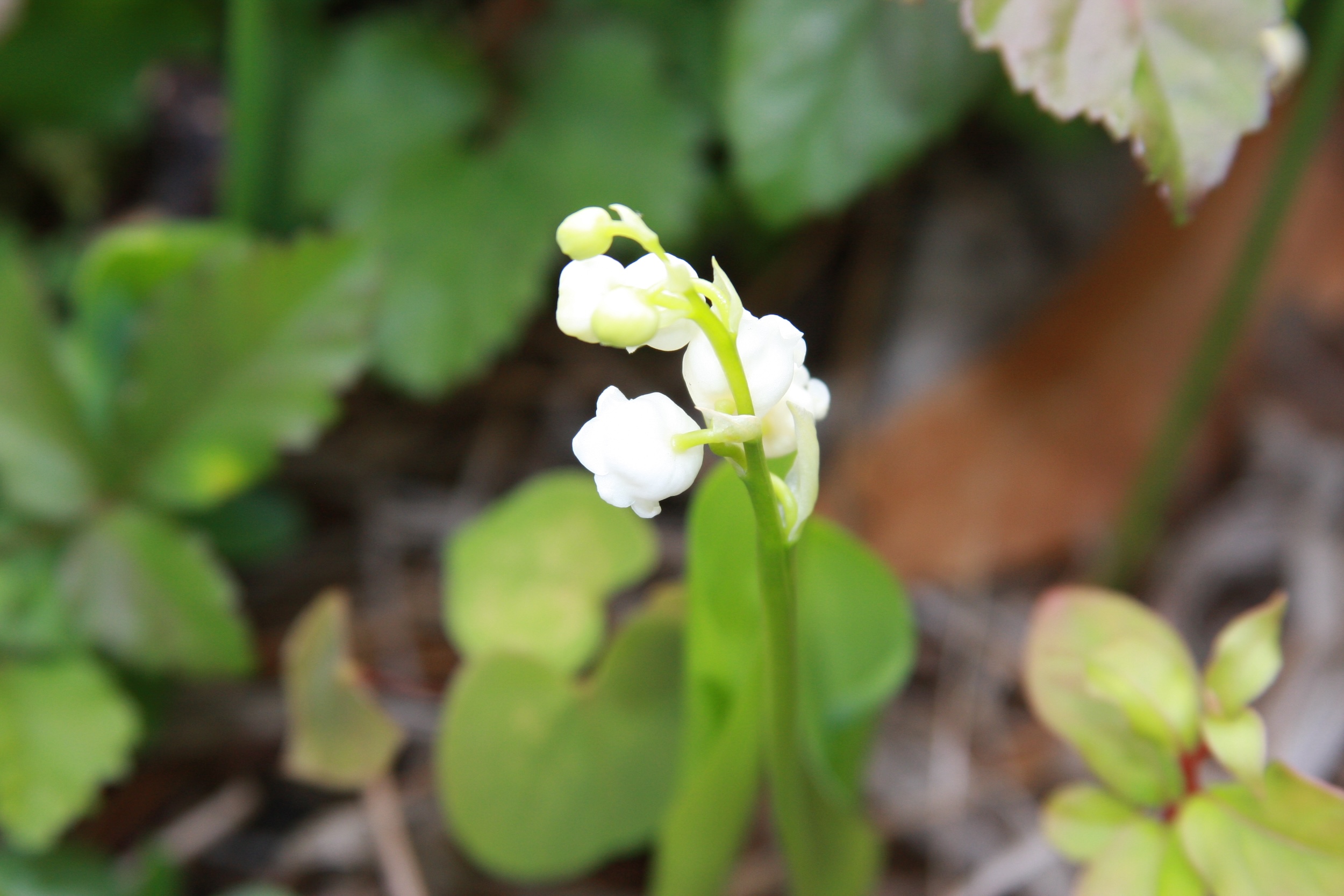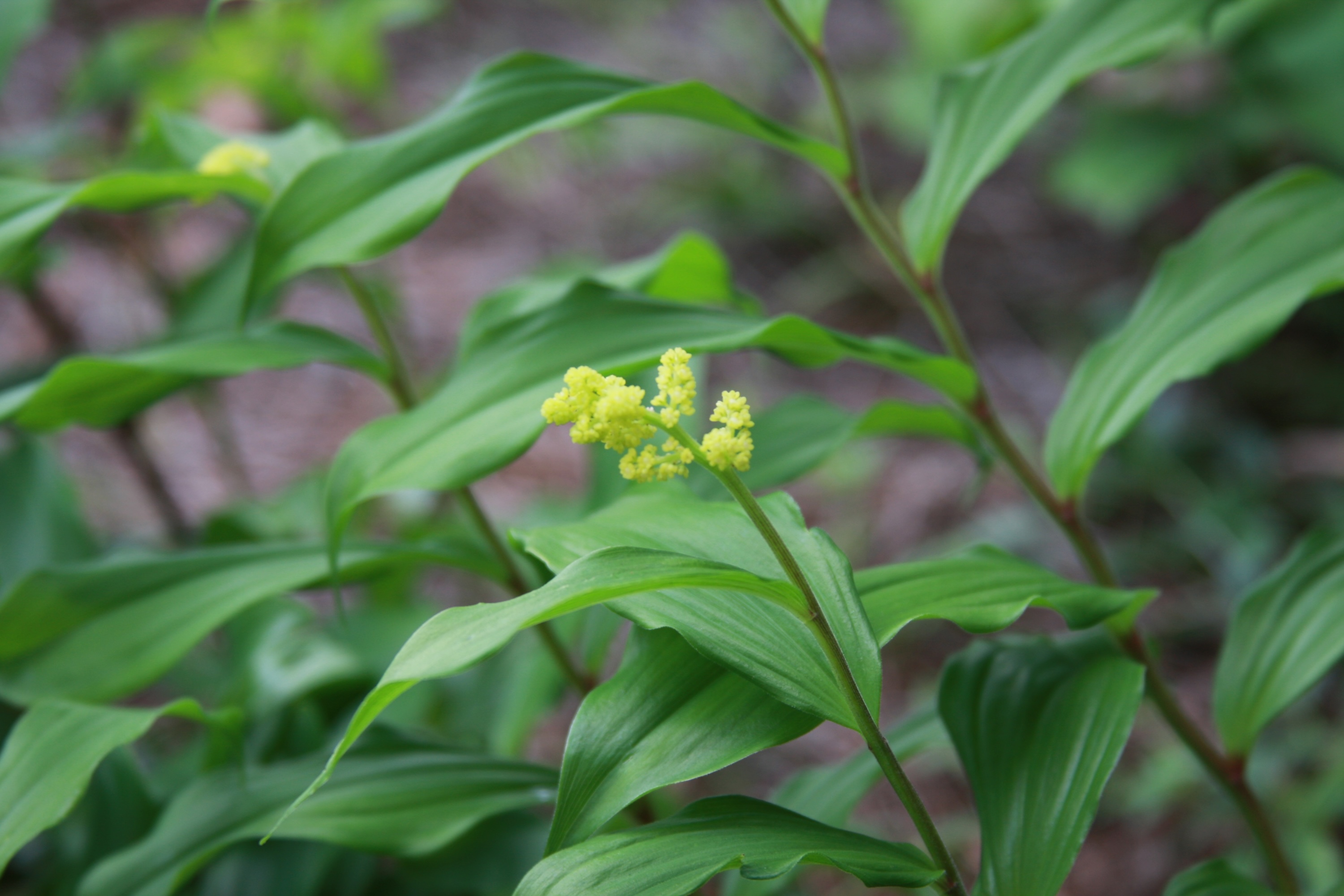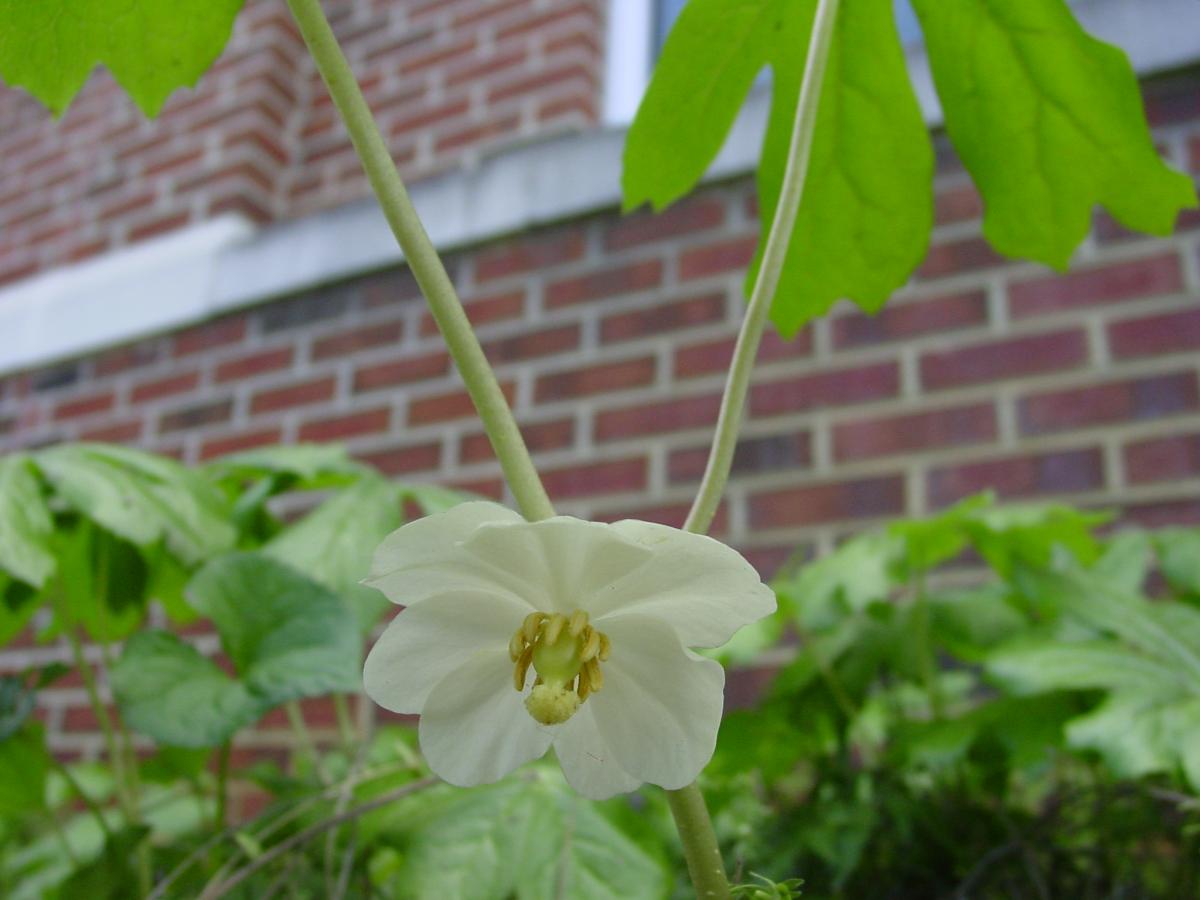James B. Ebert Wildflower Garden

Wildflowers

Mayapple Blossom

Mayapple Berry

Littlebrownjug

Tiger Lily

Butterfly Milkweed
The Wildflowers of Ebert Garden
| Scientific Name | Common Name |
|---|---|
| Arisaema triphyllum (L.) Schott | Jack in the pulpit |
| Asclepias tuberosa L. | butterfly milkweed |
| Asplenium platyneuron (L.) B.S.P. | ebony spleenwort |
| Cardamine concatenata (Michx.) Sw. | cutleaf toothwort |
| Erythronium americanum Ker-Gawl. | dogtooth violet |
| Gelsemium sempervirens (L.) Ait. f. | yellow jessamine |
| Hexastylis arifolia (Michx.) Small | littlebrownjug |
| Hexastylis virginica (L.) Small | Virginia heartleaf |
| Lilium lancifolium Thunb. | tiger lily* |
| Maianthemum canadense Desf. | Canada mayflower |
| Maianthemum racemosum (L.) Link | false Soloman’s-seal |
| Mitchella repens L. | partridgeberry |
| Podophyllum peltatum L. | mayapple |
| Pteridium aquilinum (L.) Kuhn | western brackenfern |
| Sanguinaria canadensis L. | bloodroot |
| Trillium cernuum L. | whip-poor-will flower |
| Uvularia perfoliata L. | perfoliate bellwort |
| Uvularia sessilifolia L. | sessileleaf bellwort |
| Viola sp. | violet |
| Vinca minor L. | common periwinkle* |
*Introduced, or non-native, species
After receiving a BS degree in forestry from Louisiana State University in 1949, practicing
forestry for seven years, and receiving an MA degree in botany from Duke University,
Dr. Ebert was appointed assistant professor (1956) in the Department of Biology at
Pembroke State College, now UNCP. During his tenure at UNCP, the university awarded
him an honorary Doctor of Science degree. Serving as a practicing forester introduced him to the major plant communities of
eastern North Carolina and the Southeast. Further study at Duke University expanded
his knowledge of plant and animal communities found in the region. With this background,
he was prepared to teach a broad range of courses in the biological sciences. While
teaching a variety of botanical and zoological courses over some 47 years, ecology
was a primary interest. As a field ecologist, he conducted numerous field courses, collecting many kinds of
plants and animals native to North Carolina and the Southeast. In his course, Principles
of Ecology, he required every student to accompany him on a field trip to the estuaries
of coastal North Carolina. Here, students learned firsthand how plants and animals
have adapted to their environments. While studying native, upland plant and animal communities, such as pine forests,
hardwood forests and open fields, he collected many endemic flowering plants that,
because of commercial and residential development, were increasingly difficult to
find. The purpose of the collections was to preserve live plants in natural, maintained
habitats. At retirement, Dr. Ebert transferred these plants from his home garden to the site
honoring him, and bearing his name, located on the UNCP campus at the northwest corner
of the Oxendine Science Building. The garden is maintained by interested faculty,
students, and grounds staff. Dr. Ebert passed in 2021 while residing in the Wesley
Pines Retirement Community in Lumberton, North Carolina, and is survived by his wife
Eleanor.James B. Ebert, ScD (Hon.)
